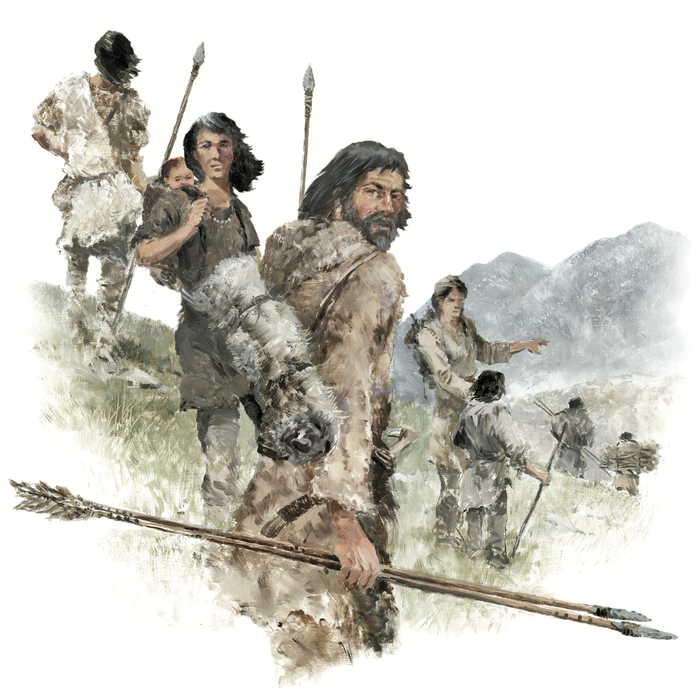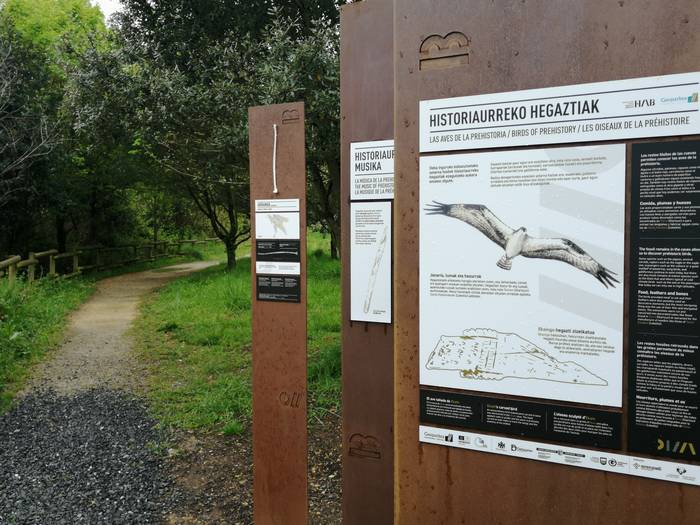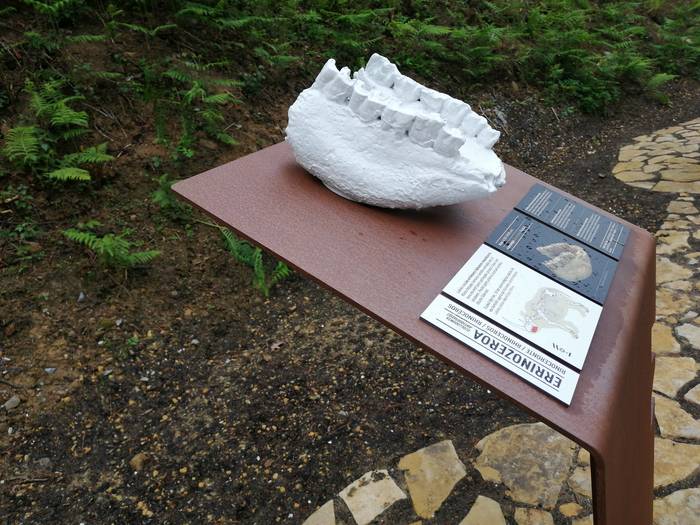Valley of prehistory (HAB)
Not long ago the world was completely different. Our ancestors lived in a cold climate, they camped in caves and camps and hunting was their main livelihood. It was a dangerous animal world where bison, mammoths, reindeer, wolves, lions and bears lived alongside humans.
HAB is an invitation to discover that exciting universe that has already disappeared. An open-air museum that will allow you to know and feel prehistory and where a tour that will transport you to an incredible and recent universe is proposed.
During the walk you will find replicas of archaeological and paleontological pieces, illustrations of daily scenes and detailed information collected in 50 supports inspired by the iconography of the valley. Immerse yourself in an open-air museum! Each season of the year offers you a new experience.
Guided tours for groups are available.
Route information:
- Distance: 3,5 km
- Difficulty: Easy
- Starting point: Port of Deba
- Arrival point: Sasiola viewpoint
What is HAB? Who was Deba?
HAB is an open-air museum with a 3Km route that will take you from Deba beach to the caves of the valley through 5 areas and 5 different landscapes.
1.The starting point. The tour begins in the port of Deba with a spectacular canvas of our protagonist, Deba, a young and strong woman who lived 20,000 years ago on our land. Here you will find a map of the route and the keys that will allow you to better understand the value of this heritage.
2.The sea. This section runs along the Deba promenade, to show us that 20,000 years ago, during the last ice age, the coast was some 10 kilometers offshore. Deba and his group traveled through that coastal steppe to access the coastal camps and take advantage of the sea resources.
3. The estuary. The Deba estuary has been formed in the last 10,000 years. Discover through three beautiful wooden viewpoints how geologists reconstruct the variations in sea level of the past, how this estuary was formed and how they fished and used its resources in prehistoric times.
4. The bridge. Deba and her family were a nomadic bunch. The prehistoric inhabitants of the valley related to groups from other valleys of the Cantabrian Pyrenees universe to exchange valuable elements such as flint and knowledge such as tool making or rock art. The bridge takes us into the valley.
5. The valley. This is the longest section of the route. Deba and his party moved easily through the caves in the valley. Here they hunted and lived. Through different points and viewpoints, the valley will show us the variety of animals they lived with, the secrets of hunting, and the weapons and tools they used in order to survive in a dangerous world.

Why is HAB a key place for prehistory?
The Basque Coast Geopark is internationally known for the flysch that surfaces on the coastline. This is a book of millions of years that allows us to understand an important part of the history of the Earth. However, the mountains inside the geopark keep a much lesser-known heritage with numerous archaeological and paleontological remains that allow us to reconstruct a much closer history: the lives of our ancestors.
HAB keys:
1. The sites. HAB contains one of the largest concentrations of prehistoric sites in the entire Cantabrian and Pyrenees. There are more than 20 important sites cataloged and studied during the last 100 years.
2. Time. Together, the sites allow us to reconstruct almost continuously 200,000 years of our history.
3. The two humans. Neanderthals occupied the valley until around 40,000 years ago. From then on, Homo Sapiens came to stay.
4. Culture. The large number of tools found in the valley allow us to define very well the cultural evolution of our ancestors.
5. Art. Homo sapiens left a mark of his artistic restlessness and his spiritual universe in caves like Ekain or Praileaitz.
6. Fossils. Fossils of more than 40 different species of animals have been found in the caves of the valley that allow us to reconstruct life in prehistory. Sites such as Kiputz stand out, where the most complete bison skull on the peninsula has been found.
7. Geology. The geological study of caves, valleys, estuaries and the coast allows us to understand past climate changes and how they affect the evolution of the landscape and sea level.

The project combines leisure and tourism with maximum scientific rigor. For this, HAB has had the participation of the most experienced archaeologists in the valley, Joxean Mugika (UPV-EHU) and Xabier Peñalver (Aranzadi); paleontologist Asier Gómez (UPV-EHU); and the geologist Asier Hilario (Geoparkea).



